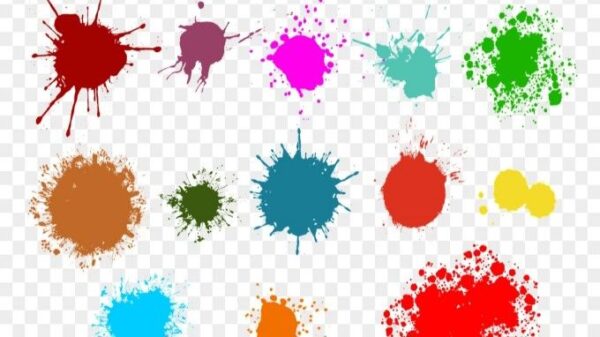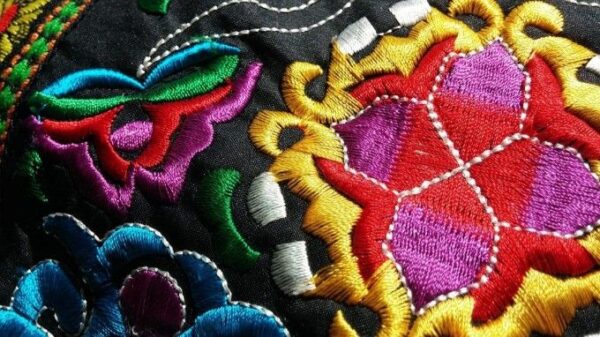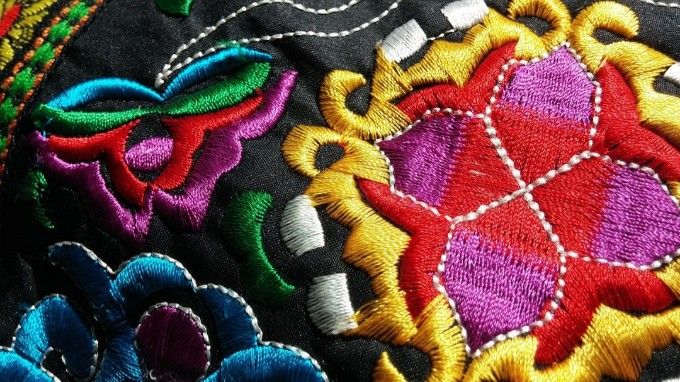Punjab stands out as the joy of India. When it comes to “Punjabi Culture Shown: Phulkari Embroidery and Traditional Wear”, it is one of the brightest states of our country where you can spot energetic dances like Bhangra, delicious snack items like ‘chhole kulche’ and music which will make your heart dance with joy. Among all these countless things, Phulkari embroidery takes the central stand because it is a spot of individuality for this state. Phulkari embroidery is so delightful that it flawlessly associates with the uniqueness of Punjab. In fact, it holds a noteworthy amount of educational status.
Meaning of Phulkari Embroidery

When it comes to “Punjabi Culture Shown: Phulkari Embroidery and Traditional Wear”, the word phulkari literally refers to work that unveils flowers in a form of embroidery. It is said to have been influenced by Vedic traditions, Sikh philosophy and even the Indus Valley Civilization. The work of phulkari is traditionally done on handspun cotton fabric and this form of embroidery started as early as the fifteenth century and became a common yet significant part of the rural life of the state. In the beginning, it was not even a commercial fact, in fact it was spun by women for women.
How is Phulkari Embroidery Done
This type of embroidery is done on ‘khaddar’ which is a type of cotton. This khaddar material comes in the colors of red, maroon and brown which are shades that allow the embroidery to shine bright. The stitch which is used to do this embroidery is the darning stitch and it is done from the reverse side of the fabric. It is a long process and when it comes to “Punjabi Culture Shown: Phulkari Embroidery and Traditional Wear”, it requires both a ton of patience and a lot of effort. The embroidery is done with a set of cheerful colors like red, yellow, orange, pink and brown. These threads are commonly known as ‘pat’ and these threads are made of a silky fabric which looks breathtakingly beautiful when stitched.

There are a few styles of phulkari which are common like the design of the garden where the whole piece of clothing is full of bright embroidery. The other style is the Chope style which is generally made by the bride’s maternal grandmother. The Nani of the bride gifts it to her on the way of her wedding. The Chope style is commonly red and has thick border patterns. The Suber style is a kind of phulkari design that is only worn during ceremonies like an important family event etc. The Darshan Dwar phulkari style dupatta is given as an offering in the Guru Dwara because it depicts the symbolic gateways of life.
The Importance of Phulkari Embroidery
Phulkari is not just an embroidery; it is a way through which we can look at the women’s lives of Punjab because there was a time when these women were denied education and equality and this was a skill which they were able to hone themselves. This was their language through which they expressed their own feelings and the motifs often showcased everything that they observed in the village such as the flowers or the birds or the animals. Other than that, they also experimented with abstract geometric patterns which can be depicted as the symbolism of the inner world of the weavers. In conclusion, both men and women still love to wear phulkari embroidered clothing. The public old-style apparel is the salwar kameez for women and kurta pajama for men. The chadar or wrap is usually worn during icier months and makes the wearer look more imperial.
Author
Shreeja Mukherjee


